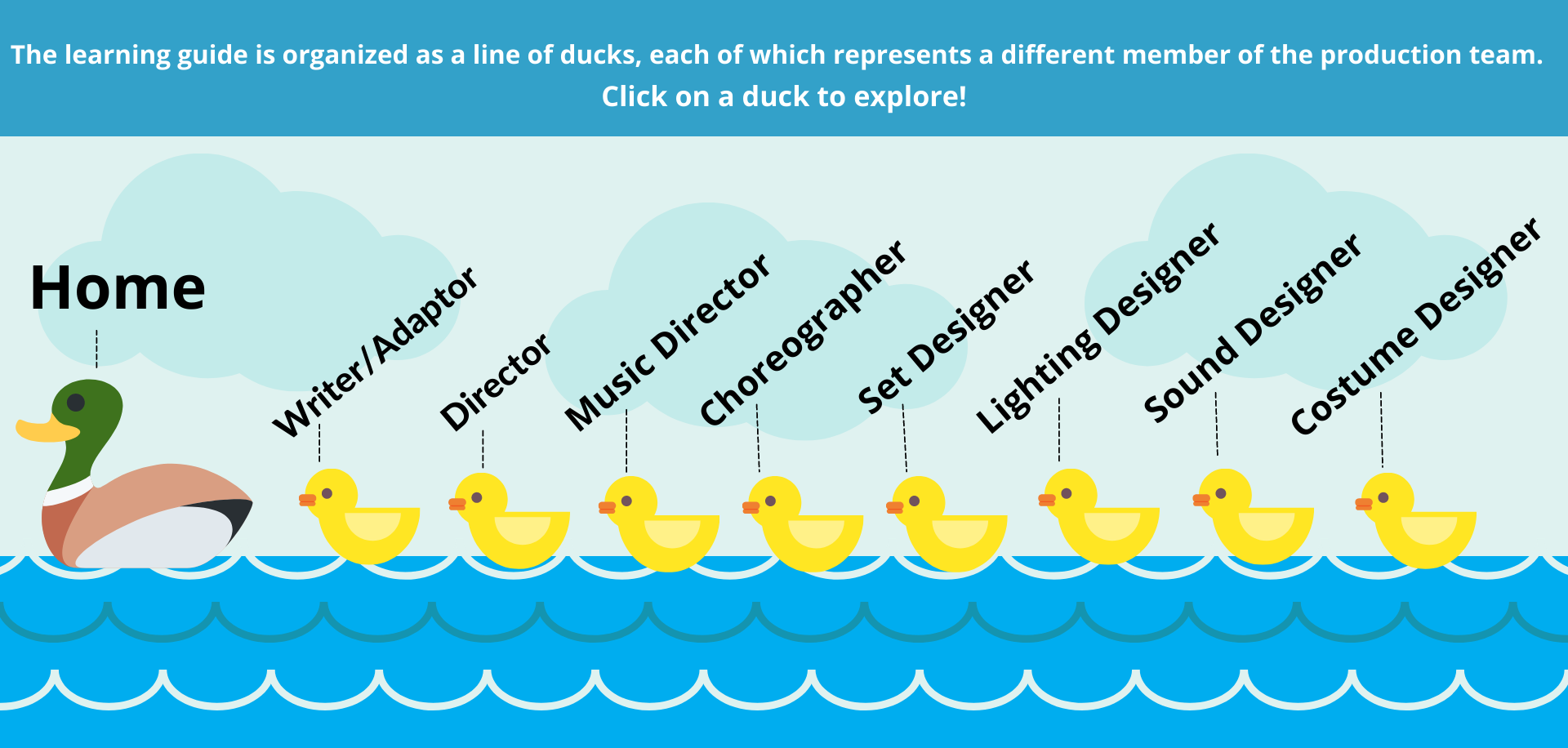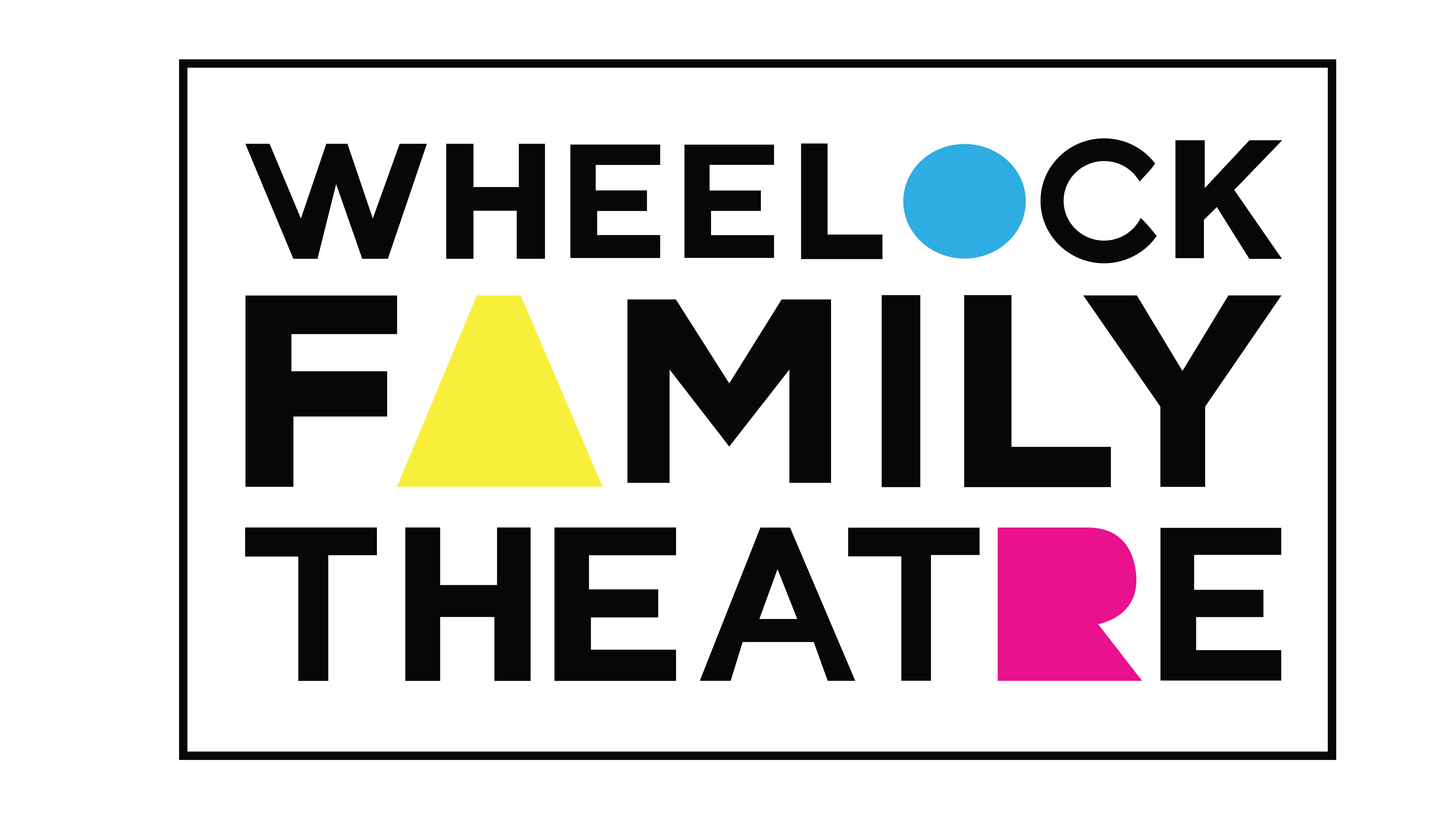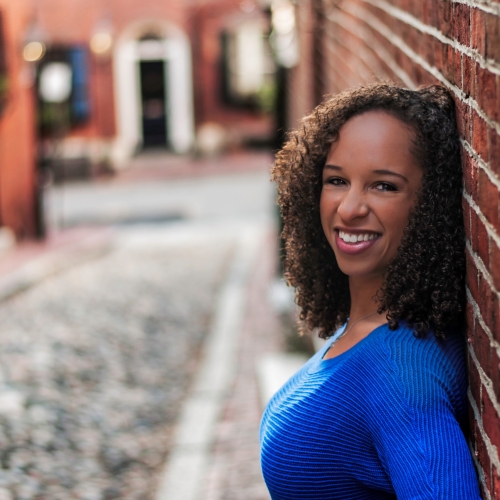
Activities are marked with the following age-range suggestions:
- EE — Early elementary (grades K-2)
- LE — Late elementary (grades 3-5)
- MS — Middle school (grades 6-8)
- HS — High school (grades 9+)
Contact Us
If you have any questions or would like to share how you and your class engaged with the VLG, send us an email at WFTEd@bu.edu.

Watch an interview with Kira
Watch a clip of choreography on Zoom from the workshop production
Watch a clip of choreography from the finale in the Boston Public Gardens
Pose the following question to your class: When you look at illustrations in a book, do you see them as entirely still images, or do you imagine movement taking place within or between illustrations?
Read aloud a story with pictures. As you read, ask students to look closely at the pictures for images that convey a sense of movement.
Provide each student or each small group of students with copies of the illustrations, a piece of white or construction paper, scissors, and glue or tape.
Ask students to select and cut out images from the illustrations that convey a sense of movement through the shape, pose, or context.
Ask students to arrange those cut-outs on their sheet of paper and use tape or glue to collage them together in an arrangement…
- Grouped by character
- Grouped by type of movement (fast, slow, smooth, silly)
- Ordered in a sequence that could become a dance
Ask students to share the images they selected and the choices they made about how to arrange them.
Ask students to share observations about each others’ collages. Consider using an “I notice”/”I wonder” thinking routine to jumpstart students’ ideas and thoughts about their peers’ work.
To expand upon this exercise…
-
Pose the following questions to your class:
- Did you see the illustrations of Make Way For Ducklings inspiring the choreography in the production? In what ways?
- Next time you read a book with pictures, do you think you will look for movement within or between the illustrations?
- Ask students to create a short dance or movement sequence inspired by their own illustration collage
- Ask students to trade collages and create a short dance or movement sequence inspired by a classmate’s collage
- Experiment with playing different types of music with each dance or movement sequence. Which types of music seem to go well with the dances? Are there any types of music that clash with the dances?
Either as a class, in small groups, or individually, ask students to brainstorm as many movement-related words as they can think of. Movement-related words can be any verb that convey movement or describe how a person or character might move.
Examples of movement-related words might include… waddle, skip, hop, trip, march, stride, parade, glide, soar, amble, walk, run, stomp, shuffle, plie, releve, pirouette, slash, kick, collide, float…
Gather all of the brainstormed words on the board or in a collaborative document. This is your ‘Movement Dictionary.’
What to do with your Movement Dictionary…
- Challenge students to act out as many movement words as possible. You could do this collaboratively or as an around-the-world elimination game.
-
Ask students to describe characters in Make Way For Ducklings or another story through the movement words that best suit them.
- EX: Ducklings — waddle, skip, hop, trip
- EX: Officer Michael — stride, march, parade
- Examine a scene from a story. Ask students to consider which movement words different characters may be doing at different moments in the scene.
- Ask students to describe themselves through the movement words that they believe best suit them.
- Each student draws three movement words out of a hat. Ask each student to invent a character who could be described using those three movement words.
- Ask students to spend the rest of their day noticing the words in your Movement Dictionary in the world around them. Share observations.
After watching the interview with choreographer Kira Troilo in the Watch It section, ask students to separate a piece of paper into three folds or columns, and label them as follows: “Questions” “Challenges” “Ideas”
Students should respond to the interview using their three columns as follows:
- Questions: What questions would you like to ask Kira or the actors about their experience teaching, learning, and performing choreography on Zoom?
- Challenges: What challenges do you think Kira or the actors faced as they taught, learned, and performed choreography on Zoom?
- Ideas: What ideas do you have about how to solve the challenges you listed? What new ideas would you like to try when it comes to teaching, learning, or performing dance on Zoom?
What to do with your questions, challenges, and ideas:
Group students into trios. Each trio must attempt to answer one of their group’s questions, conquer one of their group’s challenges, and try out one of their group’s ideas. Each group reports their experiences back to the rest of the class.
After each student completes their columns individually, place three posters around the room with the three headings. Ask students to rotate through each of the three posters and add at least one response to each poster. Responses can also build off of other students’ responses. Then, take time as a class to discuss and synthesize any themes or threads that run through the questions, ideas, or challenges.
Have students separate their three columns by cutting their paper. Put all the questions columns on one table, all the challenges columns on another table, and all of the ideas columns on another table. Either individually or in pairs, students can select whether they want to pull a questions column, a challenges column, or an ideas column. Once they have selected a column from their chosen table, each individual or pair has a set amount of time to answer as many questions as possible, conquer as many challenges as possible, or try as many ideas as possible.
In this video, a WFT teaching artist will lead your class through exploring tools for creating and conveying characters through movement.
In this video, a WFT teaching artist will lead your class through exploring tools for creating and conveying characters through movement.
Introduce the following movement concepts to your class:
- Unison: Actors move in the exact same way at the exact same time
- Mirroring: Actors move in the same way at the same time, but form a mirror image of each other
- Contagion: The exact same movement is passed from actor to actor to actor
- Variation: One movement is passed from actor to actor to actor, changing slightly with each actor
- Point of Focus: Actors do or don’t make eye contact with each other, actors do or don’t share a common place where they are looking/focusing their eyes
- Passing An Object: A physical object is passed from actor to actor to actor, actors might interact with the object in different ways
Using these movement concepts…
- Explore these movement concepts in pairs or small groups in-person in your classroom. Create a movement sequence that either focuses on one movement concept or incorporates multiple movement concepts.
- Explore these movement concepts over Zoom in pairs or small groups, with each student in their own Zoom box. How do these movement concepts become easier or more challenging over Zoom? What do you have to do the same or differently to achieve the same effect as in-person? Create and record a movement sequence over Zoom that either focuses on one movement concept or incorporates multiple movement concepts.
- In-person or over Zoom, create a silent scene that uses these movement concepts to tell a story.




